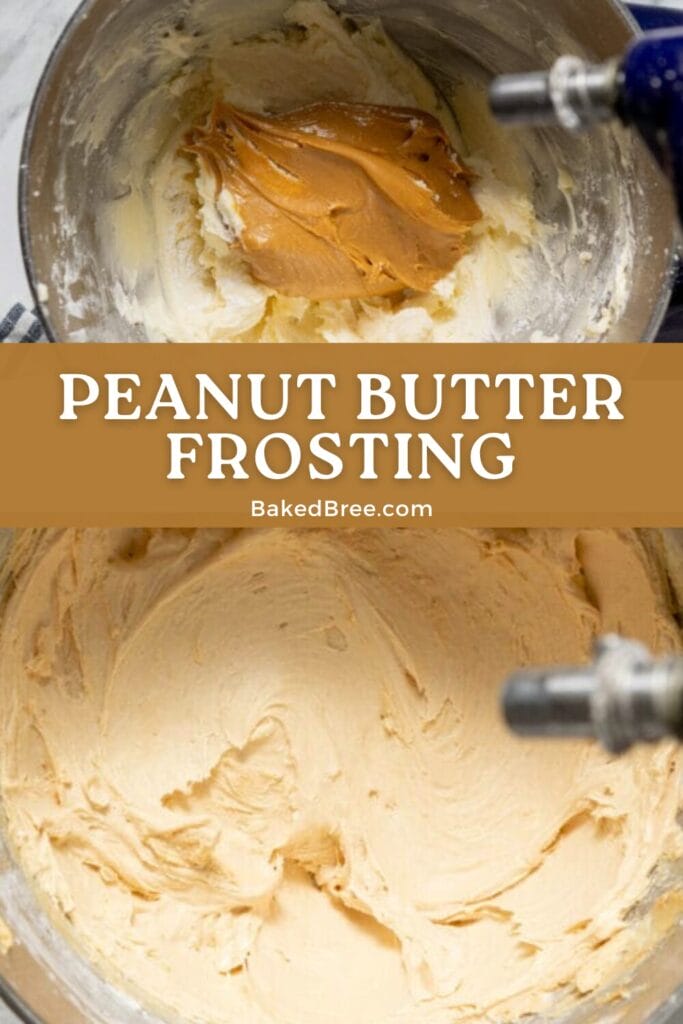Perfectly sweet and creamy, Peanut Butter Frosting can be a smooth or crunchy topping for your favorite cakes and cupcakes.
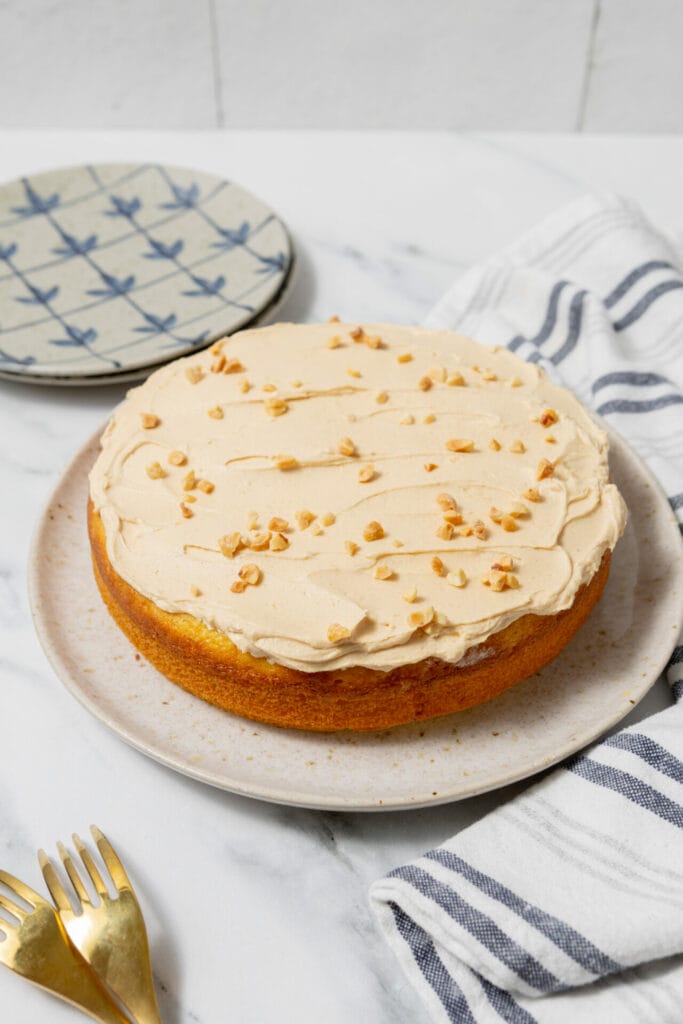
What if I told you that the delicious, creamy inside of a Reese’s peanut butter cup could be slathered all over a cake or cupcake? With this Peanut Butter Frosting, it’s for real. That sweet, creamy peanut butter taste that we all love in candy makes for the perfect flavor base for this buttercream frosting. While the Reese’s recipe dates back to at least the 1920s, it was not until after World War II that peanut butter frosting became a thing. Largely due to peanut butter being sold in glass jars to preserve tin and aluminum for the war effort, peanut butter manufacturers enjoyed a resurgence of their product’s popularity once it was sold in eye-pleasing glass jars. Not just for kids’ sandwiches or cookie recipes, peanut butter was a natural choice for buttercream frosting flavor.
Besides the perfectly balanced sweet and nutty taste of this frosting, Peanut Butter Frosting is a quick, no-stress recipe that comes together quickly. Even if you don’t consider yourself a baker, this frosting is way better than the storebought tub and very simple to make. You can also control how peanut-y you want the flavor! And although the recipe makes a velvety smooth frosting, if you like the crunchy variety of peanut butter, all you have to do is sprinkle some finely chopped peanuts on top to get that crunch you want.
Room Temperature Butter, Explained
Like many recipes, Peanut Butter Frosting calls for butter softened to room temperature. What does that mean, exactly? Whose room? My kitchen might be nice and toasty while someone else’s might be on the chilly side, so “room temperature” can be a bit subjective. Basically, room temperature means that when you gently press a finger into the stick of butter (without the wrapper on), it leaves a not-too-deep indentation. You want the butter soft enough that you can easily press your finger into it but not so soft that your finger sinks way down or causes the stick to collapse in a pool of melty goo. The best way to get your butter stick room temperature is to set it out on the counter for 30-45 minutes. If you’re short on time, you can use the microwave, but always use reduced power and program in short increments so you can stop and check with the finger-pressing trick.
Ingredients
- 1 cup unsalted butter softened to room temperature (226g)
- 1 cup creamy peanut butter (245g)
- 3 cups powdered sugar (375g)
- 1 teaspoon vanilla extract
- ½ teaspoon salt
- 2 Tablespoons milk add more if needed for desired consistency
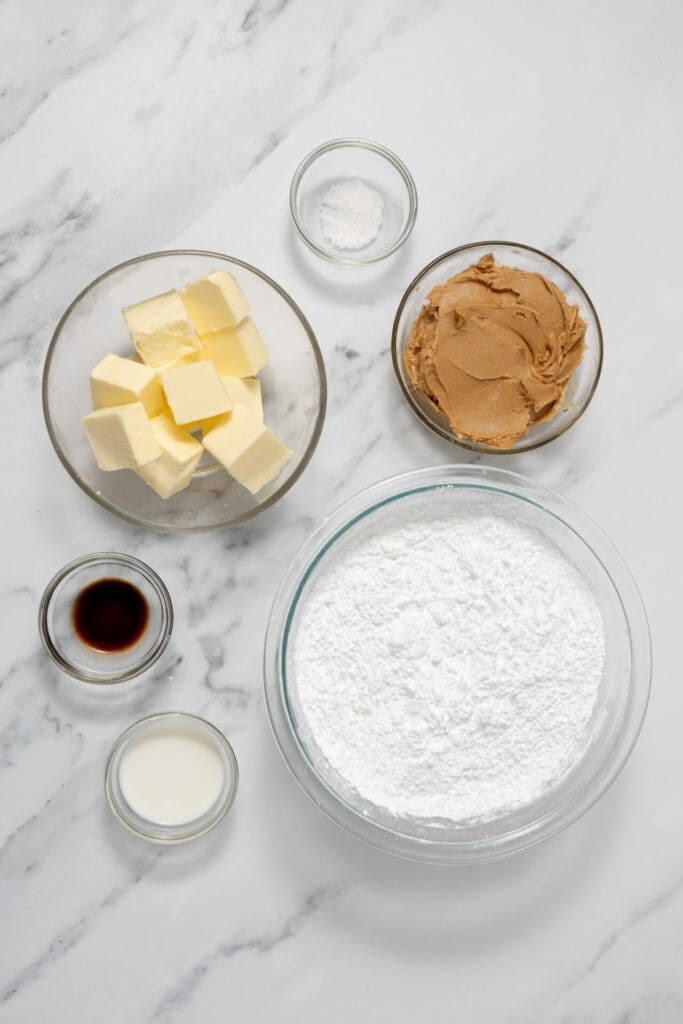
How to Make Peanut Butter Frosting
Step 1: Start by placing 1 cup of unsalted butter, which you’ve let soften to room temperature, into a large mixing bowl. Add in the creamy peanut butter. Using an electric mixer, beat these two together until they’re completely creamy.

Step 2: Now, it’s time to gradually add in the powdered sugar, keeping the mixer on a low speed to avoid a sugar snowstorm in your kitchen. After each addition, scrape down the sides and bottom of the bowl. Aim for a smooth, clump-free consistency.
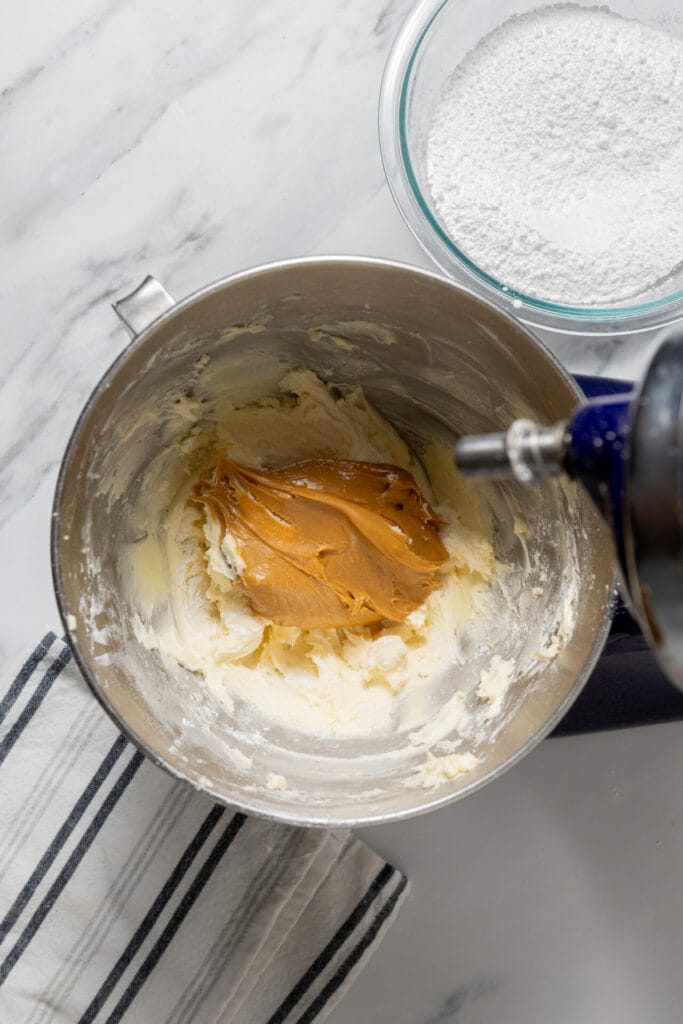
Step 3: Stir in that teaspoon of vanilla extract for a hint of warmth and the ½ teaspoon of salt to balance the sweetness.
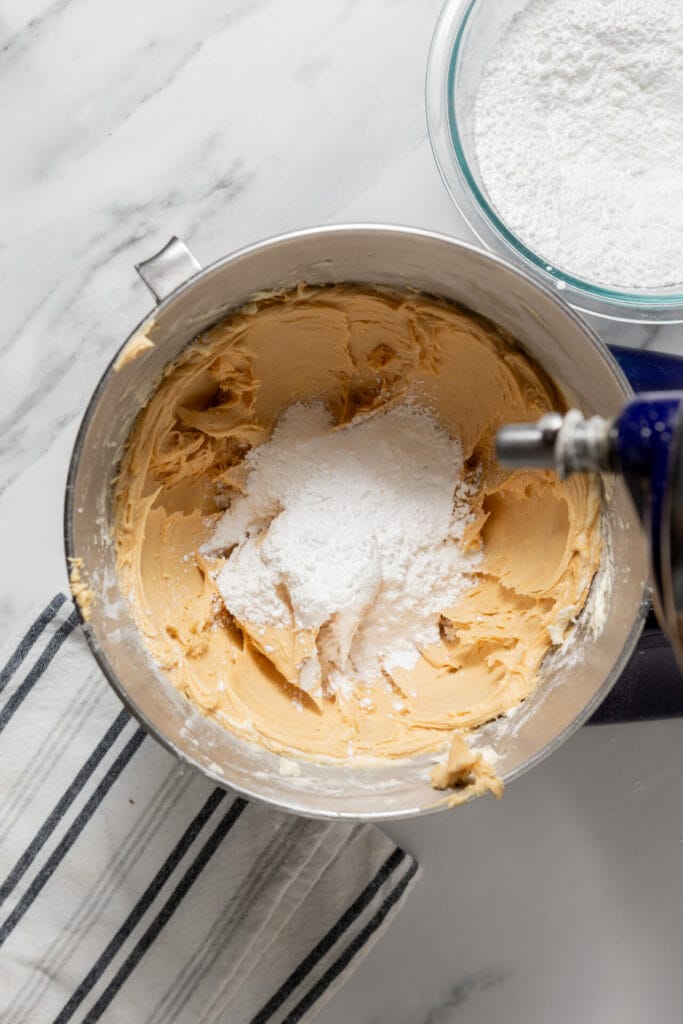
Step 4: With the mixer still on low speed, pour in the 2 tablespoons of milk. It makes the frosting smooth and spreadable. If it seems a bit stiff, add a touch more milk, just a teaspoon at a time. Once you’ve got the consistency you want, crank up the speed to high and beat for another 30 seconds to add fluffiness.
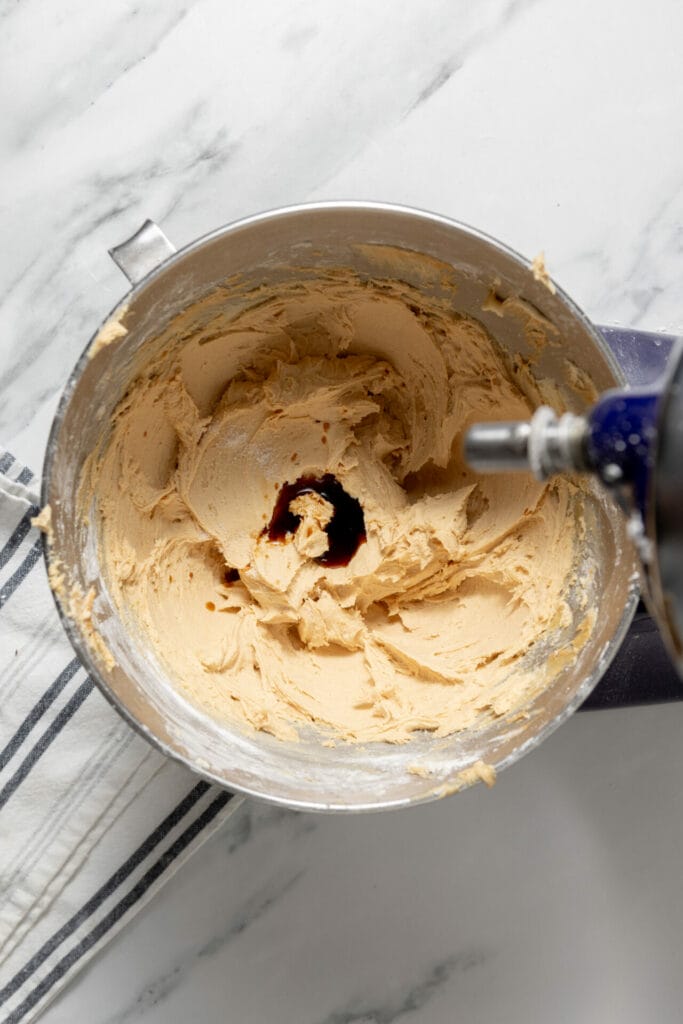
Step 5: Your Peanut Butter Frosting is ready! If you’re piping, make sure the frosting is firm enough to hold its shape.

FAQs & Tips
Even though this is such an easy recipe that you might as well whip it up right before you need to frost, it is also one that you can make ahead. If you make ahead, you can store it in an airtight container refrigerated for up to a week. Or frozen up to a month. Before using, you must let it come to room temperature, preferably by setting it out on the counter for as long as it needs. Microwaving it to thaw may result in a runny texture. Once you are finished frosting, any leftovers can be stored following the make-ahead guidelines above.
In most frosting recipes, unsalted butter allows the other flavors to come out, and it means that you can control the saltiness of the frosting. You want the frosting to be sweet-forward, not too salty. Especially since peanut butters vary in saltiness, unsalted butter is best for this particular recipe so you can add salt if needed. To balance the sweetness.
Overall, creamy no-stir peanut butter (like JIF brand) is best, but you can use whatever kind you normally eat. Just be sure to adjust with salt (for flavor) or with extra powdered sugar (for texture) if needed. If you like crunchy peanut butter, still use the creamy variety in the frosting, but feel free to sprinkle crushed or finely chopped peanuts on top for the crunch.
The recipe here makes enough to frost one layer of an 8- or 9-inch cake or about 8-9 cupcakes. If you are making a 2-layer cake, sheet cake, or more than one pan of cupcakes, double it. The recipe is easy to size up as long as you do your math correctly!
Your frosting may be grainy because the butter was not soft enough when combining with the peanut butter. You can let the mixture sit for about 15 minutes and try blending again. Or, it may be due to using natural peanut butter which needs to be stirred before using. Sometimes its texture is not as smooth.

Serving Suggestions
For peanut butter perfection, use this frosting on any kind of peanut butter-flavored cake or cupcake. It also works well on yellow cake, chocolate cake, or even Texas Sheet Cake (definitely double or triple the recipe). If you want to maximize the chocolate-peanut butter combination, pair this frosting with a milk chocolate cake, and sprinkle finely chopped mini Reese’s Cup candies on top. Heavenly!
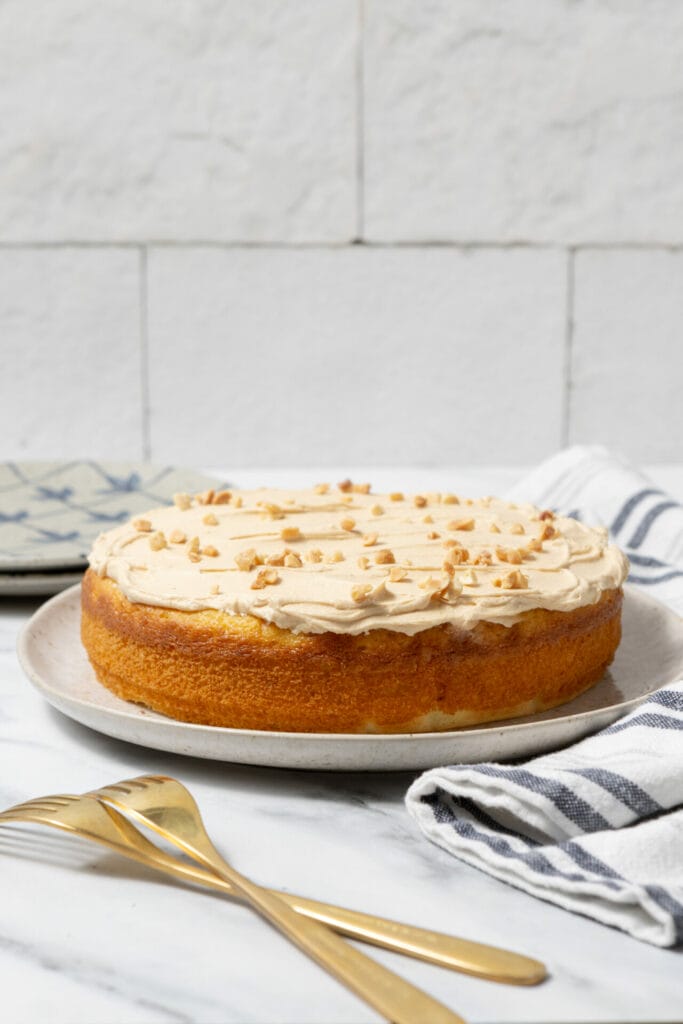
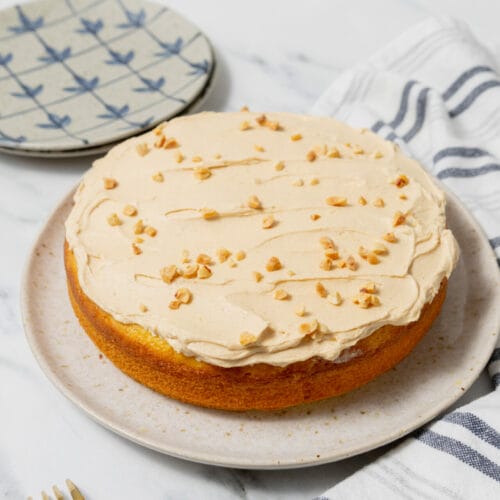
Peanut Butter Frosting
Ingredients
- 1 cup unsalted butter softened to room temperature 226g
- 1 cup creamy peanut butter 245g
- 3 cups powdered sugar 375g
- 1 teaspoon vanilla extract
- ½ teaspoon salt
- 2 Tablespoons milk add more if needed for desired consistency
Instructions
- Start by placing 1 cup of unsalted butter, which you’ve let soften to room temperature, into a large mixing bowl. Add in the creamy peanut butter. Using an electric mixer, beat these two together until they’re completely creamy.
- Now, it’s time to gradually add in the powdered sugar, keeping the mixer on a low speed to avoid a sugar snowstorm in your kitchen. After each addition, scrape down the sides and bottom of the bowl. Aim for a smooth, clump-free consistency.
- Stir in that teaspoon of vanilla extract for a hint of warmth and the ½ teaspoon of salt to balance the sweetness.
- With the mixer still on low speed, pour in the 2 tablespoons of milk. It makes the frosting smooth and spreadable. If it seems a bit stiff, add a touch more milk, just a teaspoon at a time. Once you’ve got the consistency you want, crank up the speed to high and beat for another 30 seconds to add fluffiness.
- Your Peanut Butter Frosting is ready! If you’re piping, make sure the frosting is firm enough to hold its shape.
Nutrition
